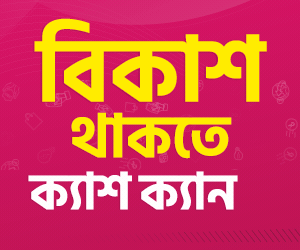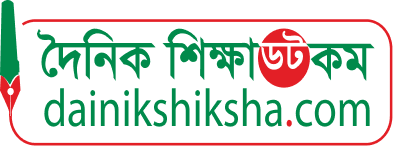A child steps onto the street from an alley -- only to be shot dead in an instant. A college student lies lifeless in a pool of blood at a city hospital, his phone vibrating with calls from "Maa". And a "laasher michhil" (procession of bodies) on the streets of Dhaka.
These are only fragments of scenes I reported while covering the July uprising.
When the quota reform protests erupted in July, I was in Kurigram covering floods, watching from afar as Sheikh Hasina branded the students "Razakars" [traitors]. Students came out in protest against this pervasive culture of tagging.
Bangladesh Chhatra League, the now-banned student wing of Awami League, swooped on protesters on July 15.
As I saw the blood-soaked faces of female students of Dhaka University, and scenes of BCL thugs attacking injured protesters even at hospitals, I knew something bigger was coming.
I called my desk editor, boarded a train, and reached Dhaka on July 16 -- the day Abu Sayed was killed in Rangpur.
This was no longer just about quota reform.
There's a saying: whoever controls the DU dormitories controls the country. Passing Ruqayyah Hall at 11:00pm that night, I heard commotion -- the women had revolted, driving out BCL. Soon, all female dorms followed, then the men's.
By dawn, DU was free of BCL.
That afternoon, students found themselves surrounded -- police, Rab, BGB closed in, unleashing shotgun pellets, tear gas, and sound grenades. And of course there were BCL members.
Forced to abandon their campus in tears, some chanted, "If police enter our campus, we'll enter parliament."
That night, just when I thought it was all over, I heard a procession trying to enter DU through Chankharpool -- fired upon, they moved to Jatrabari, where locals joined.
The next day, with private university students and people from all walks of life joining, the movement became a mass uprising. Jatrabari and Rampura turned into battlegrounds, fierce battles also took place in Uttara, Mirpur and Dhanmondi.
History was being written in blood.
July 19 was one of the bloodiest days. Unarmed protesters were shot down one after another at Rampura, Banasreee, Badda, Jatrabari and beyond. Bullets also rained down from Rab choppers..
In the evening, bodies flooded Dhaka Medical College Hospital, filling the two morgues. Bodies were piled on top of one another. Parents searched for their missing children among the dead. The injured poured in by the hundreds, with floors soaked in blood, and doctors struggling to hold back tears.
It wasn't a warzone -- there weren't any invading or occupying forces involved, this was Dhaka, where the government was carrying out a mass killing against its own people.
The college student whose phone rang endlessly with calls from "Maa" was Samudra, killed as BGB opened fire near Rampura's BTV centre.
I interviewed his mother a week later, she asked, "Did he die instantly? Or did he suffer? What were his last words?"
I had no answer.
Covering Rampura and Banasree on July 19, I counted 13 bodies within just an hour.
Some of the fallen were nameless street children, without families, their names unlikely to appear on martyrs' lists.
Fast forward to August 4, the day before Hasina's fall, I reached Shahbagh after being stopped twice by the police. There, I found a sea of people -- from 4-year-old Anas on his father's shoulder with a placard that read, "Shoot me if you can," to rickshaw pullers like Yusuf.
By afternoon, as security forces and ruling party men opened fire indiscriminately, bullet-hit bodies poured in in the DMCH – some dead, some alive.
At one point, as the hospital could not accommodate anymore, protesters carried their fallen comrades out of the hospital and piled them at the Shaheed Minar, chanting, "There's no space left for my martyr brothers."
And then, out of sheer exhaustion and exasperation, I witnessed a desperate, defiant act.
Some of the protesters began a solemn procession, carrying four bodies on their shoulders. It felt like the climax of everything -- the suffocating weight of 15 years under authoritarian rule and the brutal atrocities inflicted on dissenters -- all converging into a single, haunting image: a literal laasher michhil, a procession of the dead, on the streets of DU.
The procession was attacked by police when it reached Shahbag. Amid gunfire, protesters were forced to retreat, leaving the bodies behind. The police then seized and carried the bodies away.
Back at the Shaheed Minar, the night brought another haunting sight.
A child's body lay wrapped in a blood-soaked national flag at the base of the monument. We tried to find his identity searching his school bag and pockets for any identification, without success.
Another body lay beside him, also unnamed, unknown.
Then, a man claiming to be the child's father arrived. He left in a hurry as he couldn't provide any proof supporting his claim.
We decided to take the bodies to DMCH. As we boarded the bodies on rickshaw vans, the police arrived and opened fire on us, even as we raised our press vests to show we were journalists.
The bodies were snatched away – a routine task of police in the culture of impunity.
I felt exhausted, devastated, and defeated, wondering if his parents would ever know what happened to their child.
Panic swept over me as the image of four-year-old Anas flashed in my mind: "Did they shoot him too?"
By midnight, the student leaders announced that the long march to Dhaka, originally planned for August 6, would now be held on August 5. Its aim was clear: to topple the autocratic regime.
The horrors of the day and the uncertainty of what lay ahead kept me awake through the night.
It was already August 5.
source: The Daily Star







